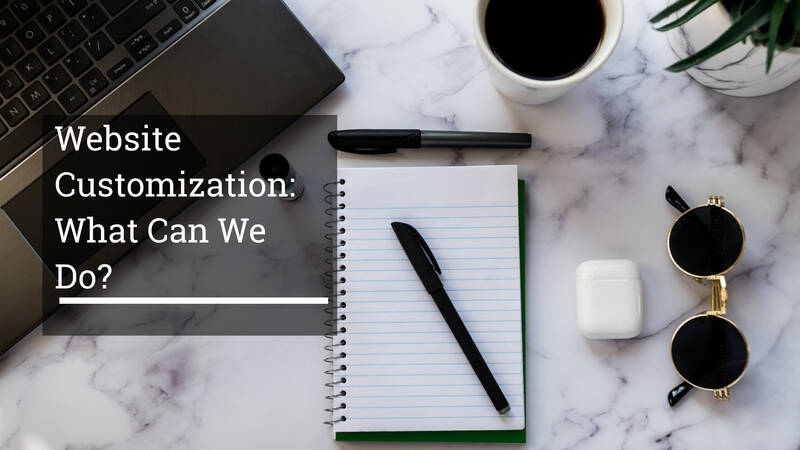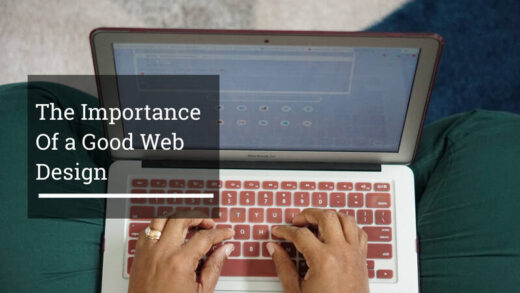
Nowadays, in this fashionable world, people get very uptight when they don’t look quite presentable. This would also be the case with web design.
Every individual would definitely want his website to look good, if not the best he can. Here are some things that we might consider when wanting to create a professional looking website.
Color schemes and themes.
When designing, always choose colors that match. An example of a matching color would be to have a dark background, with visible words and designs.
With the dark theme, try not to mix too many bright colors in the design. What we should NEVER do is mix two very different colors, such as purple and yellow.
Now of course it would depend on the purpose of the website, but those two colors are too flashy for someone who wants to make it look more professional.
Themes should always be tailored to the company or rather the organization, etc. If the website was created to serve a food business, it would be wise to stick to that particular category, rather than going back to a different topic, like machinery.
Fonts should be used in relation to the formality of the website. A simple sans-serif font would suffice in most cases.
In rare cases, such as art and design groups, they may want to use great designs and fonts. Of course, that’s only if you know what you’re doing.
Finally, we must always try to think about our visitors, see the way they see. The resolutions and file sizes of the images should not be too large in terms of size. This is to allow maximum compatibility and meet the needs of our visitors.
So planning is something we should always do, before trying something.
The Key to Better Websites
One of the main implications of a good, well-organized website is to keep visitors on the website. Definitely, a website is created with a purpose, unless it is intended for personal use, which is the minority.
For example, a portfolio website would want to be visited and its content viewed. For Internet businesses and companies, your website certainly aims to provide product information, make sales, or something similar.
However, most people undoubtedly prefer visually captivating designs, etc. It is undeniable that this does not cause any harm, but you have to put yourself in the shoes of others to understand how a website visitor might think, do and react.
1) Navigation
As I said, a web designer has to learn to think like his visitors think.
Situation A: website with good navigation (2-3 hyperlinks to the landing page), well planned in terms of location and design.
Situation B: Website with poor navigation (it takes forever for the visitor to reach your landing page), difficult-to-read navigation sources, and poor navigation buttons / bar placement.
In Scenario A, a visitor will always want to be able to access your landing page. For example, the individual comes to her website and is interested in the product sold, but wants to find more information.
He finds navigation smoothly and enters the particular product information page.
Regarding situation B, a visitor comes across the website and would also like to learn more about the product.
Unfortunately, due to the poor location and wacky font types, it takes forever for the visitor to find the navigation bar.
Even when she does, the links to product information are nowhere to be found (ex: home> about> products> product image> etc… [a few more clicks]> product information).
Analysis: In both situations, wouldn’t a website with similar characteristics to Situation A be more rewarding, ergo, better?
Design, design, design. To put the wonders of good design into perspective, imagine when we buy a t-shirt.
First of all, what do we look at? The design of the t-shirt, of course. Well, most people do, aside from the material factor. But suppose all other factors are constant, wouldn’t design or appearance then become the key aspect?
2) Design
Putting yourself in someone else’s shoes, as always. Here are two other situations.
Situation A: a website with good design and impressive graphics. (Good color combinations with matching theme), pictures. (Optimal and relevant resolutions) and appropriate fonts and word sizes.
Situation B: A website inversely equipped with horrible graphics and images in terms of resolution, quality and relevance. (Red images with a bright green background) The fonts used did not match, although they were too fancy. (Typefaces too small and artistic)
Situation A, visitors entering the website are immediately amazed by the design and artwork. Well placed images and designs somehow symbolize the positive nature of the company / website. As we know, most people judge by impression.
As for Situation B, the environment in poor condition due to severe lack of creativity and poorly taken photographs would not exactly help attract visitors.
Fonts that were hard to read, let alone understand, and themes that didn’t match in terms of color, aren’t exactly welcoming, are they?
Analysis: Now the main idea here is to always plan your websites, try to get feedback and perspectives from other people. Each way of thinking may differ, but at least you can improve.
Don’t get me wrong, even a properly designed simple website would generate a lot of positive implications, but the key idea here is to at least keep an impressionable website.
Why You Should Use Graphic Templates
When it comes to graphics, most internet marketers avoid using graphic templates, be it e-book covers, website layouts, or promotional banners, because they strongly believe that by using graphic templates they are tarnishing their own business. .
They want to have a unique identity and therefore will always find a professional graphic designer to do the job. Well, a big surprise awaits you!
When you buy a graphic template, you will be able to customize it to some degree or even create a totally new design based on it. What’s the point of using the template then you say?
Well, it serves as a source of inspiration and ideas for a totally new design. You can’t derive anything from a blank canvas, right?
On top of that, you are actually saving a lot of precious time that you could otherwise spend on more important matters like developing new products or marketing your products.
When you buy a pre-made template, you only need to edit one or two things to give it an identity of your own, and that gives you more time and flexibility to work on other things.
Well, let’s say you argue that hiring a designer to do the work is just as quick. That may be true, but don’t forget that hiring a professional designer to do a custom design will cost you a lot of money.
Unless you need a totally unique identity that you want to firmly establish in your niche, you don’t need a designer to design it for you.
Not all graphic templates are suitable, so you need to be careful when choosing one. Consider quality over price, and you’re on your way to creating a positive image for your business while saving more time for more productive tasks.
Ways To Improve Sales Through Your Website
Anyone who has ever done online marketing knows that the lifeblood of a business is site traffic. More visitors equal more sales. However, here are some ways you can modify your sites to improve sales without the need for more visitors.
The first method is to incorporate your personal touch into your sales message. Nobody wants to be sold by a complete stranger, but many people will buy what their close friends recommend.
If you can convince your audience that you are a personal friend who has your best interests at heart, they will convince them to buy your products. Remember to speak to one person in your sales newsletter, not your entire audience.
The second method is to post testimonials and comments from your clients. A good idea would be to post good and bad comments; That way, prospects will be truly convinced that these testimonials are real.
When potential customers see testimonials on your website, they will have the confidence to buy from you because humans follow the herd mentality; When others have bought it and proven its authenticity, they will jump on the bandwagon and buy too.
Use visual representations for the problems and solutions that your product offers. Not everyone will read your text from head to tail, but most people will pay attention to the images on your website.
Offer quality bonuses to accompany the product. When you offer bonuses that complement your product, your prospects will feel that it is a very good offer and it would be stupid to miss out.
Be sure to state the monetary value of your bonuses so that people feel even more compelled to accept your good deal.
Finally, ask about the sale! Many people attract their prospects with the benefits of their product, they sell them with stories of how you have solved many problems, they even offer them incredible bonuses, but they forget to ask for the sale.
Give clear instructions on how to buy your product (for example, “click the button to buy now“).




1 Response
[…] Nowadays, in this fashionable world, people get very uptight when they don't look quite presentable. This would also be the case with web design. […]